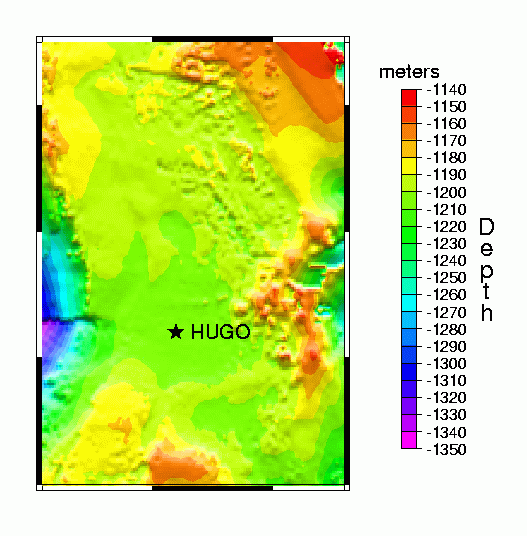What is the Hawai'i Undersea Geo-Observatory?
 |
The Hawai'i Undersea Geo-Observatory (HUGO) is an automated submarine volcano observatory installed on the summit of the undersea Loihi seamount and connected to the shore via fiber optic cable. Scientists at the University of Hawaii's School of Ocean & Earth Science & Technology (SOEST) will monitor activity on Loihi by collecting data from experiments connected to the HUGO junction box. At its initial deployment in October, 1997, these experiments included a seismometer, a hydrophone and a pressure sensor. Eventually the HUGO project will monitor earthquakes and eruptions, geology, geophysics, biology, hydrothermal venting and other activities on the underwate seamount. Loihi is located approximately 50 miles due south of Kilauea volcano on the sland of Hawaii. Its summit lies at a depth of about 1000 meters while the deepest part of the seamount reaches a depth of over 5000 m. Loihi is thought to be the youngest expression of the Hawaiian hot spot and may one day become the next island in the Hawaiian chain. The image to the left junction box being loaded onto the R/V Independence for deployment in October, 1997. |
HUGO was funded by a generous grant from the National Science Foundation
.
 |
|
 |
The figure to the left shows the route along which the fiber optic cable runs. The 47 km fiber optic cable, as well as ship time to deploy the cable, was donated by AT&T. The far end of the cable is connected to the HUGO junction box. The cable then runs along the Loihi's north rift zone and along relatively flat bathymetric saddle to Honu'apo Bay on the Big Island. There data from the cable are received at the HUGO shore station. HUGO is controlled via a van on shore at Honuapo, and will soon have a data link to the USGS Hawaiian Volcano Observatory on Kilauea. The Pacific Tsunami Warning Center in Honolulu will receive a direct data feed from the pressure sensors. |

